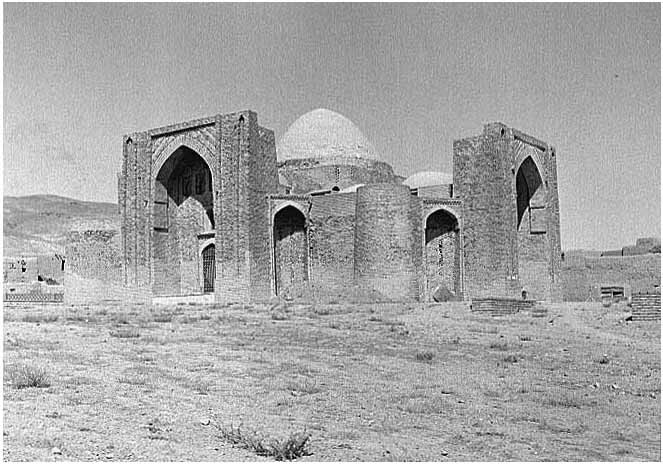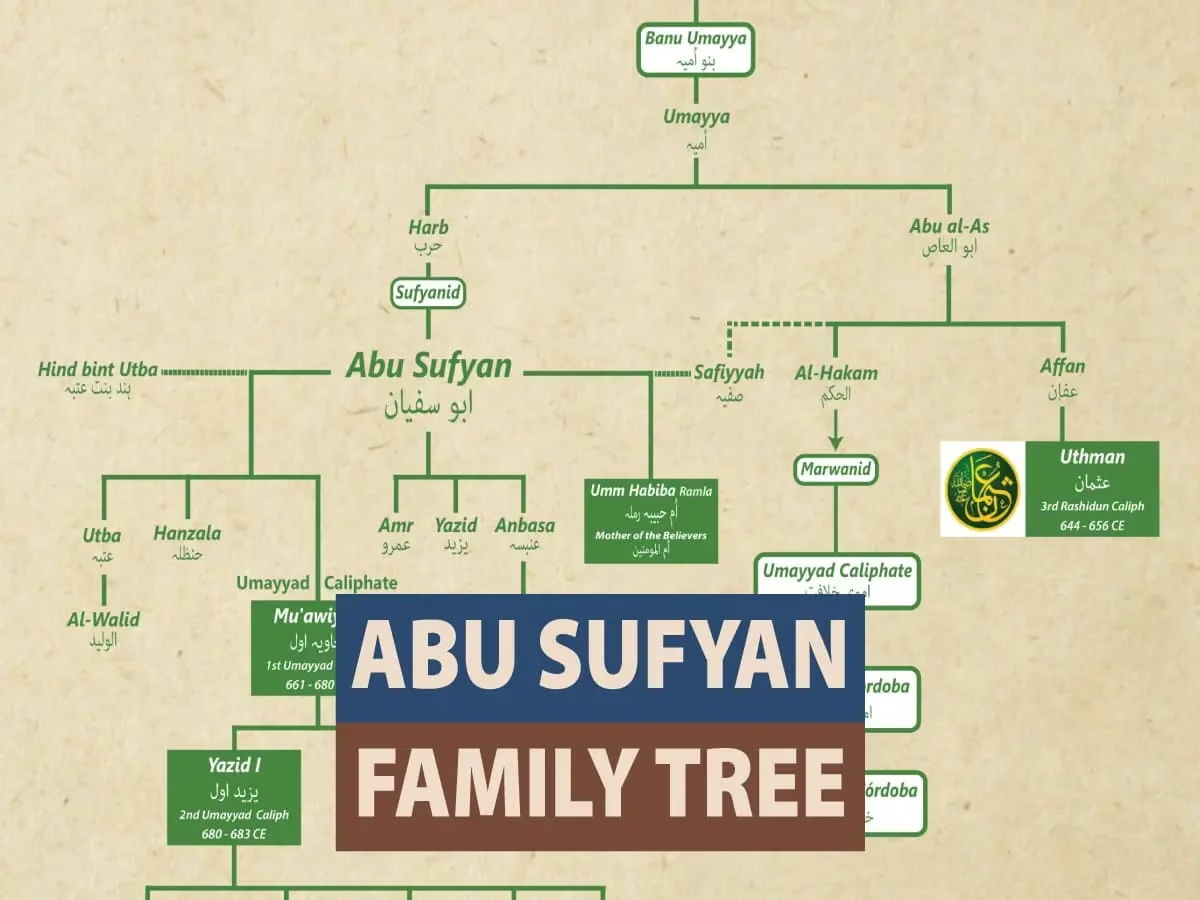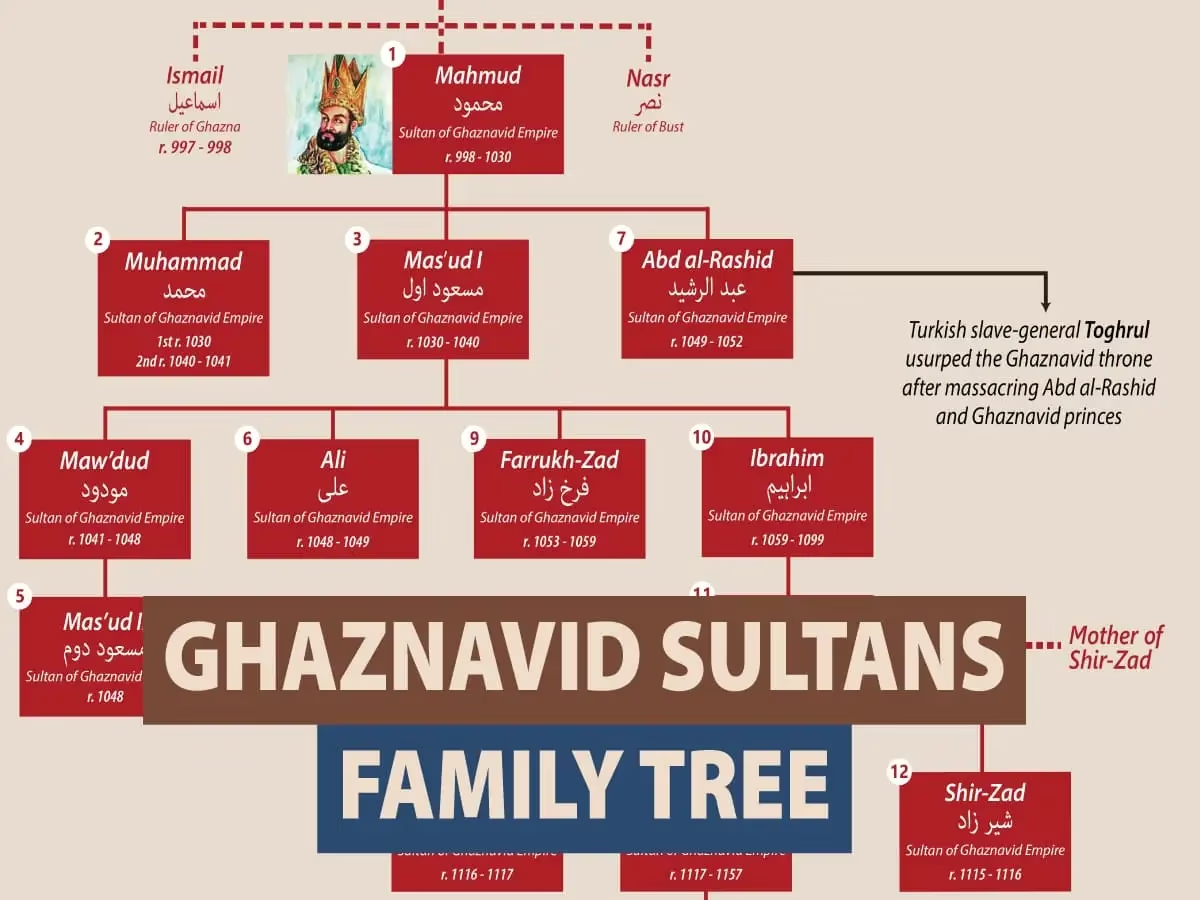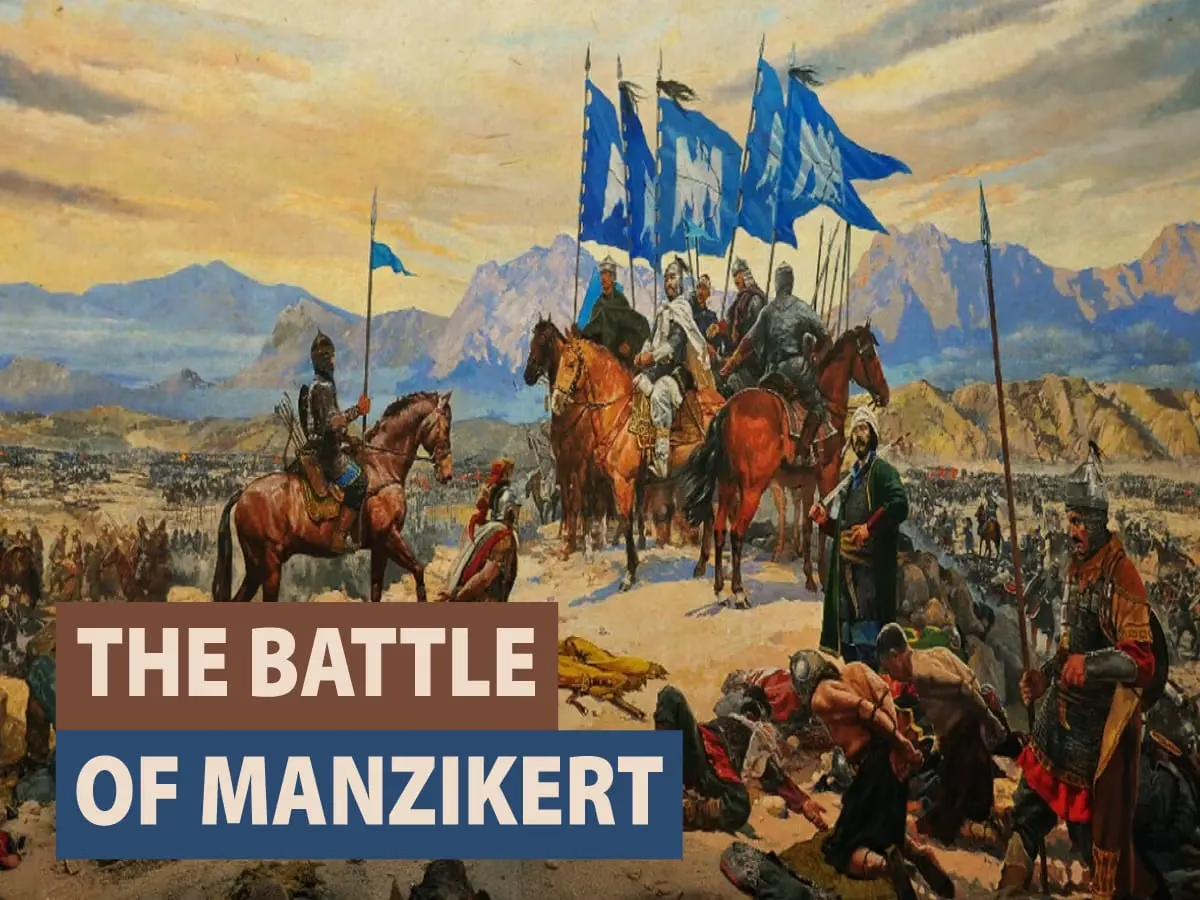On 02 November in 971 AD/CE, the first Independent ruler of Ghaznavid dynasty, Sultan Mahmud of Ghazni was born in Ghazni, Samanid Empire (present-day Afghanistan). He was the son of Sabuktigin who was the slave of Alptigin, a Turkic slave commander of the Samanid Empire. Mahmud was the first Muslim sovereign to be known as the “SULTAN”.
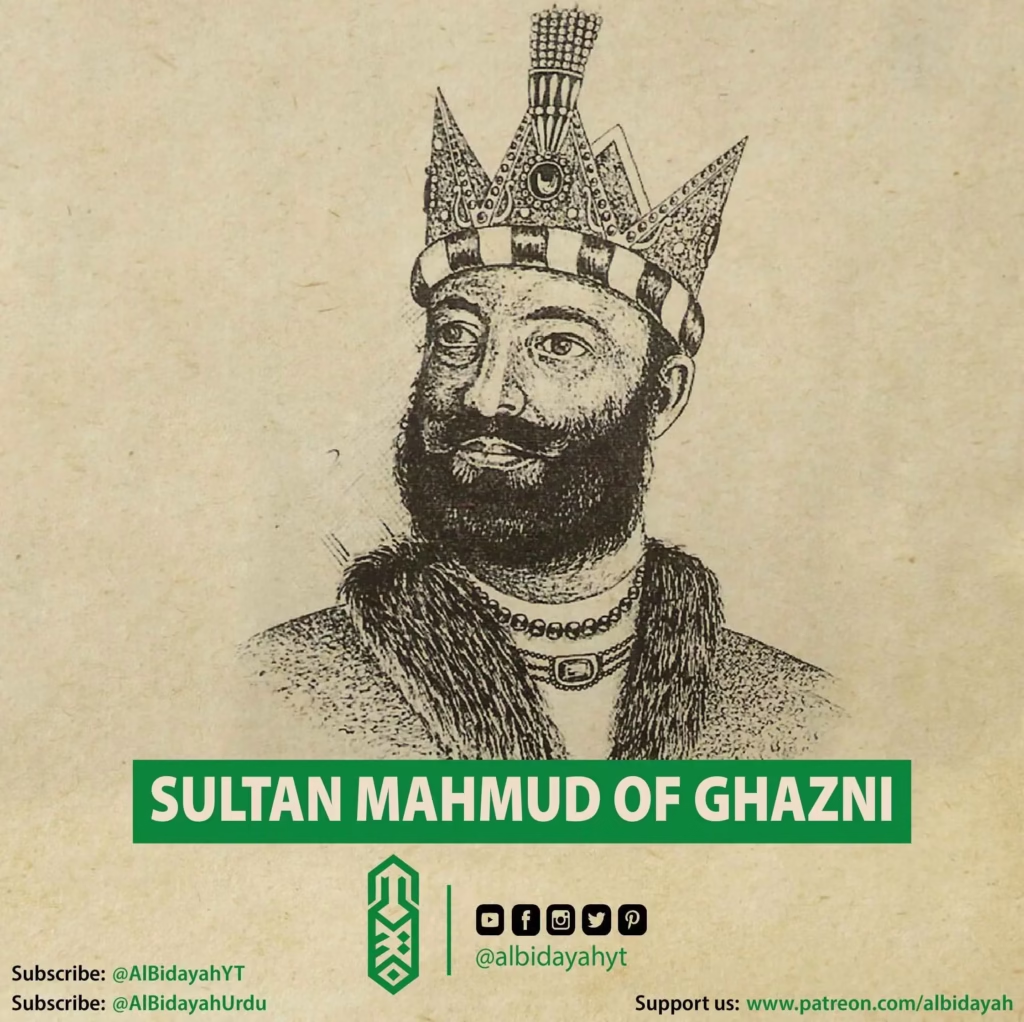
See Also: Ghaznavid Sultans Family Tree
During Mahmud’s early years, the Samanid Empire was in decline. Alptigin seized control of Ghazni while still recognizing Samanid authority. After Alptigin’s death, Sabuktigin became the ruler and began expanding the kingdom.
Sabuktigin died in 997 AD/CE and was succeeded by his son Ismail. Ismail was the brother of Mahmud. Therefore, a war of succession broke out and in the Battle of Ghazni in 998, Mahmud defeated his brother and took the crown. By 999 AD/CE, Mahmud of Ghazni consolidated his power and announced his independence from the Samanid Empire. Samanid empire ceased to exist in 999 CE.
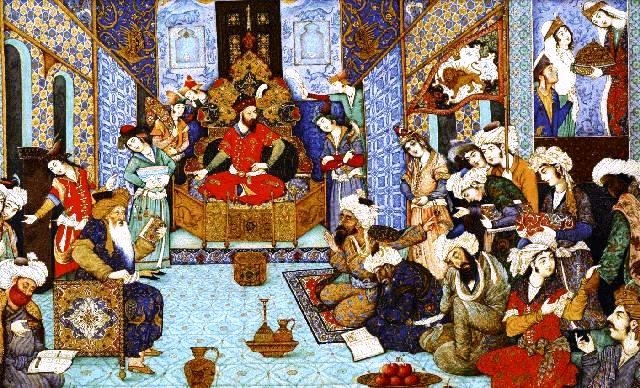
Mahmud had already shown his remarkable administrative ability and statesmanship while he was serving under his father. At the time of his accession, Ghazni was a small kingdom. Therefore, he started his campaign to expand his kingdom in 1001 CE.
His main antagonist in northern India was Jaipal, the ruler of the Hindu Shahi Dynasty of Punjab. He defeated Jaipal in the battle near Peshawar. From 1001 to 1026, Mahmud kept fighting in modern-day Afghanistan and Pakistan, and parts of India.
Mahmud’s most controversial and well-known campaign was his invasion of Somnath in 1025 AD/CE. According to various historical accounts, the attack has been exaggerated and mythologized, with some viewing it as a strategic raid rather than a full-fledged conquest.
Mahmud was a skilled warrior and administrator. He transformed his capital, Ghazna (modern Ghazni, Afghanistan), into a cultural center rivaling Baghdad at that time. Attracted by his munificence and encouragement, many outstanding scholars like al-Beruni and Ferdowsi settled in Ghazna.
See Also: Sultan Alp Arslan Family Tree
Mahmud’s conquest of northern India furthered the exchange of trade and ideas between the Indian subcontinent and the Muslim world. It helped to disseminate Indian culture in foreign lands. He died in 1030 and was buried in Ghazni (now Ghazna, Afghanistan).
